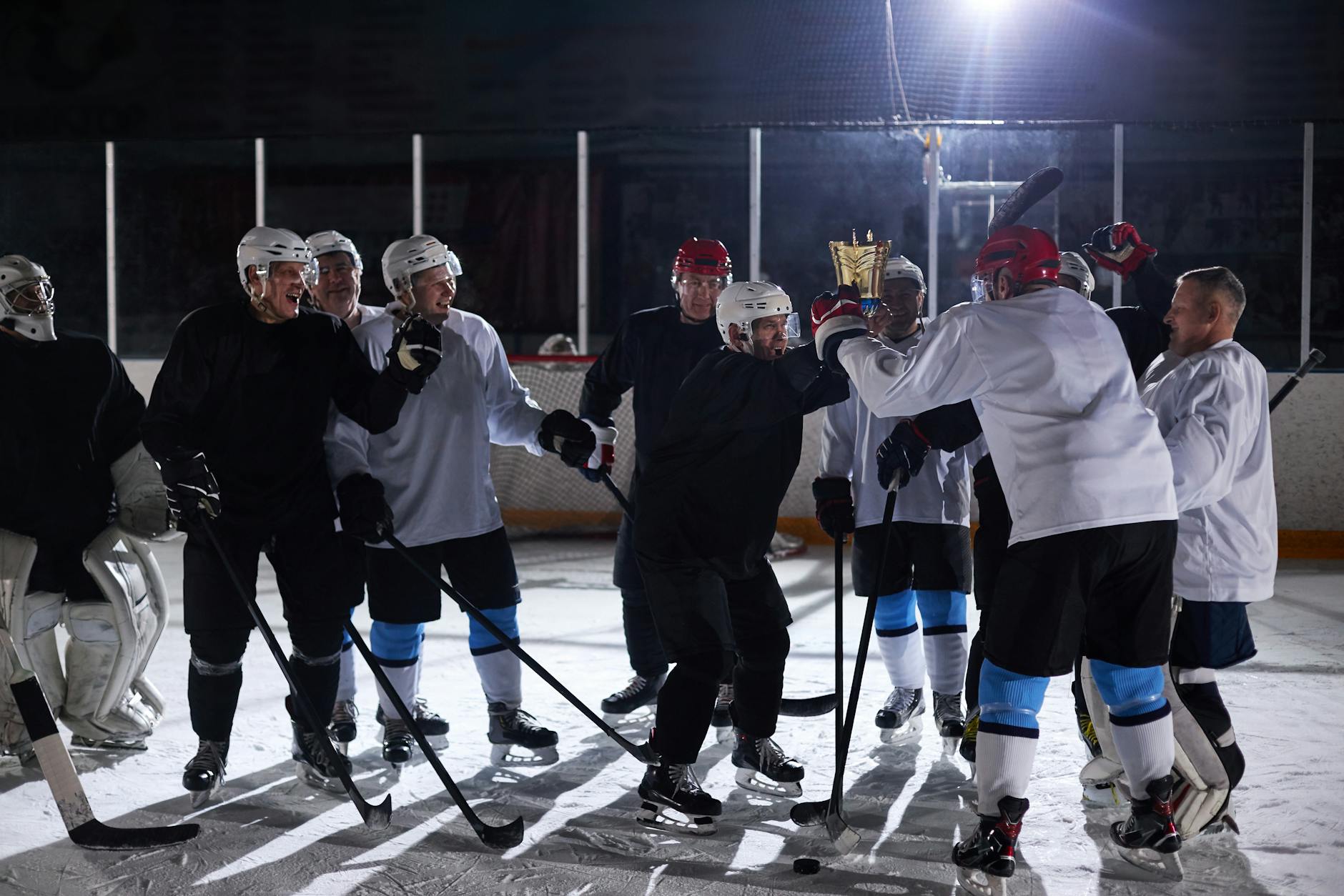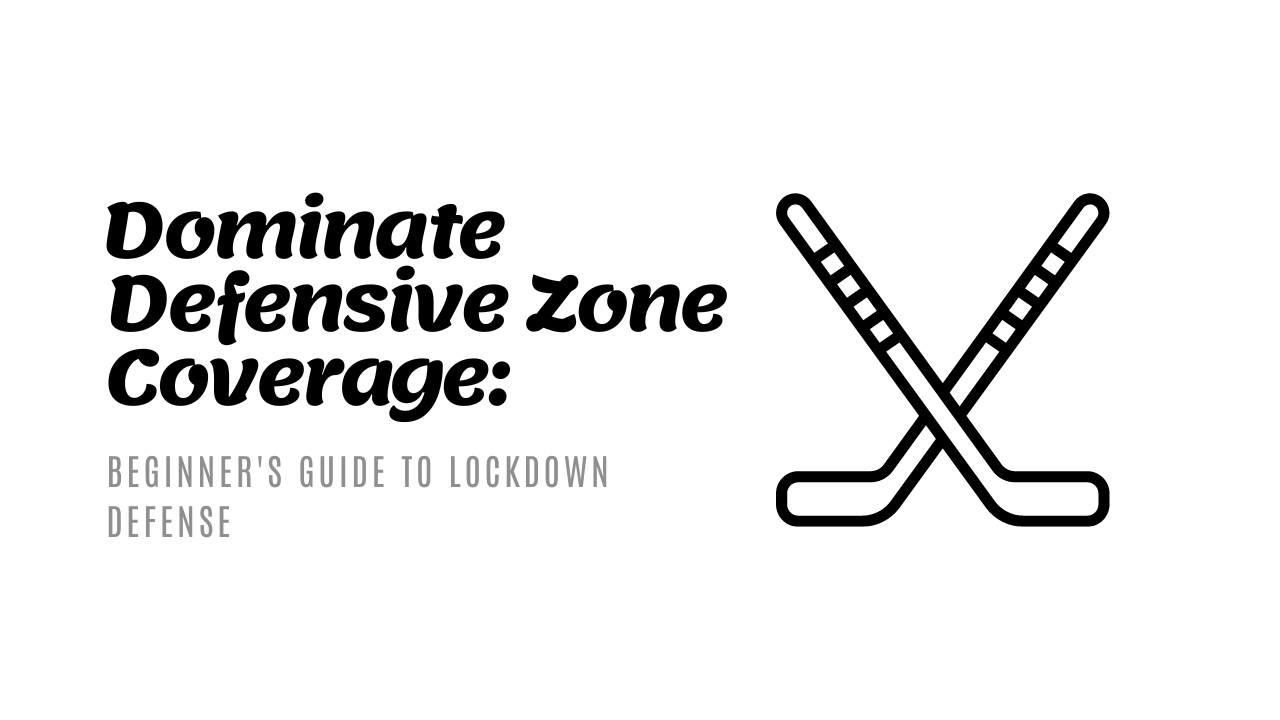If you’re a hockey player looking to sharpen your game, then understanding defensive zone coverage is key. Imagine you’re on the ice, the opposing team is pressing hard, and it’s up to you to keep them from scoring. Knowing where to position yourself and how to read the play can make all the difference.
In this post, you’ll learn the essentials of defensive zone coverage what it is, why it’s important, and how you can effectively implement it in your game. By mastering these tactics, you’ll not only help your team but also elevate your own performance. Let’s dive into the basics and get you ready to dominate the defensive zone.
Understanding Defensive Zone Coverage
Understanding defensive zone coverage in hockey is crucial for every player on the ice. It involves strategies and responsibilities that help protect your own net and prevent the opposing team from scoring. Let’s dive into the key elements of defensive zone coverage that all hockey players should grasp.
Layered Defensive Zone Coverage
Layered defensive zone coverage is like building a wall in front of your net. It involves positioning players in layers to create obstacles for the opposing team. By having multiple layers of defense, it becomes harder for the opponents to get scoring opportunities close to the net. Each layer has a specific role, from pressuring the puck carrier to blocking passing lanes, ultimately making it challenging for the other team to penetrate and score.
 Photo by Tima Miroshnichenko
Photo by Tima Miroshnichenko
Defensive Zone Accountability
Defensive zone accountability refers to the moments during gameplay where each player must fulfill their defensive duties diligently. It includes aspects like marking opponents tightly, covering players in specific zones, and supporting teammates when needed. Players need to stay positionally aware, communicate effectively, and be ready to react to sudden changes in the game to maintain a strong defensive stance.
Defensive Zone Coverage Strategies
Various defensive strategies are employed in hockey to enhance defensive zone coverage. Two common strategies include the Box Plus One and man-to-man coverage. The Box Plus One strategy involves four players forming a box shape in front of the net, with one player positioned higher to pressure the puck carrier. On the other hand, man-to-man coverage assigns each player to mark a specific opponent, ensuring tight coverage and minimal gaps for the opposition to exploit.
In a game of hockey, mastering these defensive zone coverage concepts and strategies is key to a solid defense that can effectively shut down opponents and secure victories. Understanding the layered approach, maintaining accountability, and implementing strategic coverage tactics collectively contribute to a robust defensive game plan that every player should strive to execute flawlessly.
Tips for Effective Defensive Zone Coverage
Understanding the tactics for effective defensive zone coverage is crucial in maintaining a strong defense on the ice. Here are some key strategies to enhance your team’s defensive performance:
Protecting the House
In hockey, ‘protecting the house’ refers to the area directly in front of the net, where defenders aim to prevent the opposing team from scoring. By setting up a solid defense in this critical zone, players create a barrier that makes it challenging for the opposition to penetrate and take high-quality shots. It’s like safeguarding your home base, ensuring no intruders can breach your defenses. Properly positioning players in front of the net and clearing rebounds are vital aspects of protecting the house effectively.
Positioning and Communication
Proper positioning and clear communication among players are key elements in successful defensive zone coverage. Players must maintain their positions based on the movements of the opposing team and work together to close gaps and block passing lanes. Effective communication ensures that everyone is on the same page, covering the right areas and supporting each other when under pressure.
Just like a well-coordinated team of defenders in any sport, hockey players need to communicate seamlessly to anticipate plays and react swiftly to threats.
 Photo by Саша Лазарев
Photo by Саша Лазарев
Transition Play
Transition play is a critical aspect of defensive zone coverage that can quickly turn defense into offense. When a team gains possession of the puck in their defensive zone, they must transition smoothly to initiate a counter-attack. Quick transitions catch the opposing team off guard, creating scoring opportunities and putting pressure on the opponent’s defense. Transition play requires fast and decisive decision-making, as teams switch from defending to attacking mode in the blink of an eye.
It’s like turning defense into a sudden and impactful strike, catching your opponent by surprise.
By mastering these aspects of defensive zone coverage, hockey players can strengthen their defense, thwart opponent attacks, and capitalize on scoring chances through swift transitions. Effective communication, disciplined positioning, and a collective focus on protecting the house form the foundation for a solid defensive strategy on the ice.
Training Drills for Defensive Zone Coverage
Training drills for defensive zone coverage are essential to enhance your skills and teamwork in hockey. These drills focus on improving positioning, stick control, and transitioning between defense and offense efficiently. Here are some effective training drills that can take your defensive game to the next level.
Drill 1: Box Plus One Simulation
A key aspect of defensive zone coverage is coordination among teammates and maintaining the correct positioning to prevent scoring opportunities. The Box Plus One simulation drill emphasizes these skills by setting up a defensive box formation with one player providing additional support. This drill helps players understand their roles, communicate effectively, and anticipate plays to disrupt the opponent’s offense. Practice this drill to strengthen your defensive foundation and teamwork.
 Photo by Tony Schnagl
Photo by Tony Schnagl
Drill 2: Gap Control and Stick Positioning
Improving gap control and stick positioning is crucial for intercepting passes and blocking shots effectively in the defensive zone. This drill focuses on maintaining the right distance from the opponent while positioning your stick to disrupt passing lanes. By mastering this skill, you can limit the opponent’s scoring chances and regain possession of the puck. Practice gap control and stick positioning to become a formidable defender on the ice.
Drill 3: Defensive Zone Breakout Practice
Efficiently transitioning from defense to offense is a vital aspect of defensive play in hockey. The defensive zone breakout practice drill simulates scenarios where the team needs to move the puck out of their defensive zone quickly and effectively. By practicing this drill, players can work on their passing, communication, and decision-making skills to initiate smooth transitions and create scoring opportunities on the offensive end. Enhance your defensive zone breakout skills through dedicated practice sessions.
For more defensive zone coverage training drills, check out resources like Defensive Zone Hockey Drills and Defensive Coverage Hockey Drills for a variety of drills tailored to different skill levels and team structures. Keep honing your defensive abilities to become a reliable asset in your hockey game.
Common Mistakes in Defensive Zone Coverage
Understanding the common mistakes in defensive zone coverage can significantly improve your hockey gameplay. Let’s delve into a few key errors to watch out for and how to rectify them.
Overcommitting and Puck Watching
Overcommitting and puck watching in the defensive zone can leave your team vulnerable to quick opposition attacks. When players focus solely on the puck, they may lose track of their defensive responsibilities and positioning, creating openings for the opposing team to exploit.
To avoid overcommitting and puck watching, emphasize the importance of maintaining positional awareness. Players should keep their heads up, scan the ice, and communicate with their teammates to ensure proper coverage. Instead of fixating on the puck, encourage players to anticipate plays and react strategically to maintain a strong defensive presence.
 Photo by Ron Lach
Photo by Ron Lach
Lack of Communication and Coverage Assignment
Poor communication and unclear coverage assignments can lead to defensive breakdowns and missed assignments in the defensive zone. Without clear communication, players may duplicate coverage or leave gaps that skilled opponents can exploit.
To improve in this area, encourage open communication among teammates. Clearly define coverage assignments, establish a system for signaling switches, and emphasize the importance of supporting each other on the ice. By fostering a culture of effective communication and accountability, teams can enhance their defensive cohesion and performance.
Failure to Clear the Zone
Failing to clear the defensive zone effectively can result in sustained pressure from the opposing team and limit offensive opportunities for your own team. In high-pressure situations, the inability to execute clean zone exits can lead to turnovers and scoring chances for the opposition.
To address this issue, emphasize the importance of controlled zone exits under pressure. Teach players proper techniques for board play, puck support, and quick decision-making to facilitate successful zone clears. Encourage players to maintain composure, protect the puck, and work together to transition from defense to offense efficiently.
For more insights on defensive zone coverage strategies, check out these resources:
- Layered Defensive Zone Coverage
- Defensive Zone Accountability
- Defensive Zone Coverage – Box Plus One
- Defensive Zone Coverage Explained by Denis Savard
- Diving into the Three Main D Zone Coverages in Modern Hockey
Conclusion
Mastering defensive zone coverage is crucial for any hockey player aiming to improve their game. You need to communicate effectively with your teammates to ensure everyone knows their role.
Always be aware of your positioning. This means staying between the opponent and your own net. Stick to your assignments and avoid chasing the puck recklessly.
Good defensive zone coverage leads to fewer scoring chances for the opposition. It also means more puck possession for your team, giving you better control over the game.
By focusing on these key aspects, you can enhance your defensive skills and contribute significantly to your team’s success. Keep practicing, stay disciplined, and make these techniques a core part of your game strategy.

